Health and Wellbeing, WipeoutsBreathe
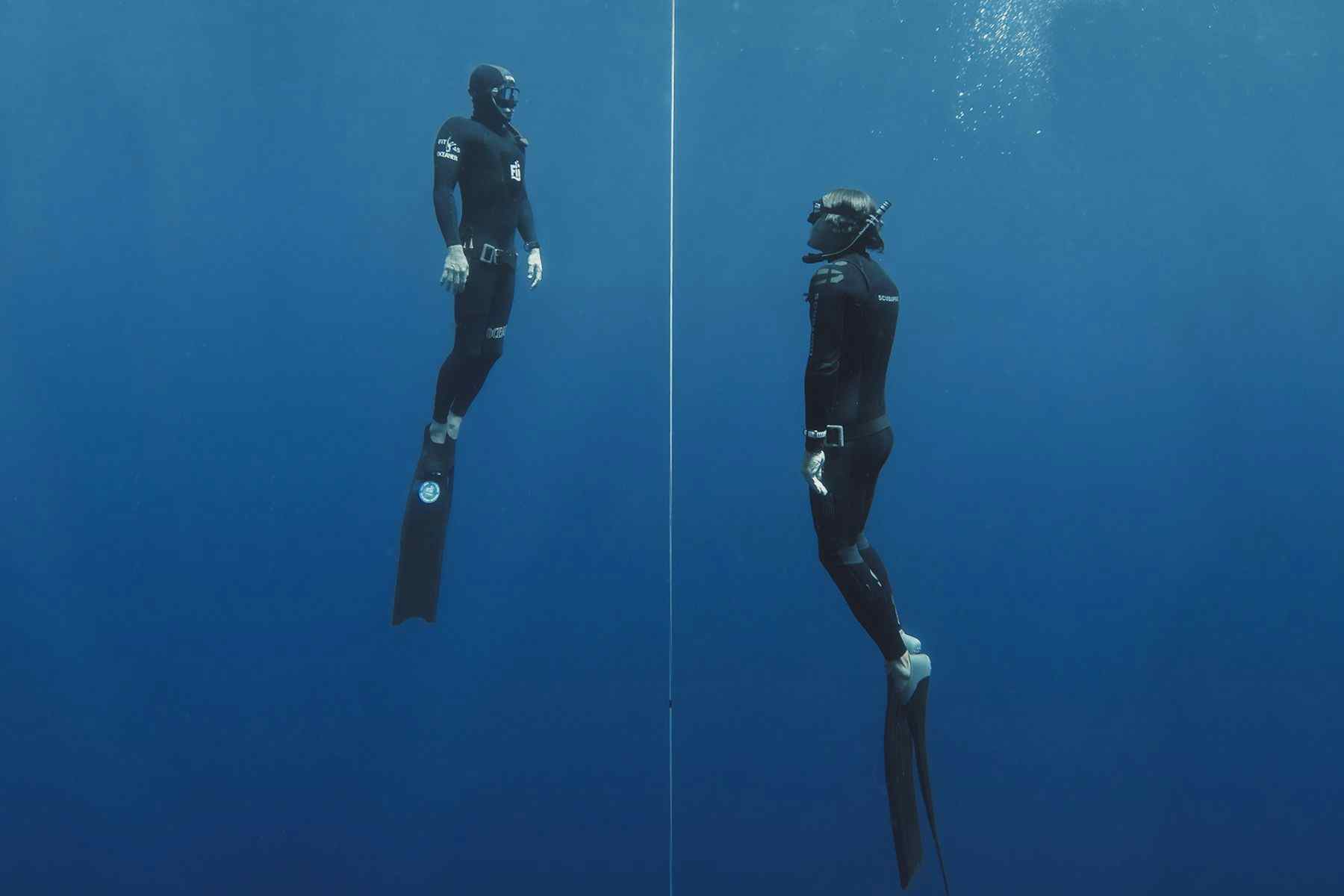
Breathe in. Breathe out. In. Out. We all do it all day, every day, without a second thought – around six hundred million times in the average lifetime. In fact, the only time that most people ever think about their breathing is when they’re sat in a yoga class uncomfortably pinching their nose with alternating fingers in pranayama, or when they’re underwater wondering how long before they need to surface and take a gulp of air. As surfers, we encounter this second scenario more often than most. And yet, most surfers are blissfully ignorant of the mechanics of this most reflexive of actions and of the positive impact of training to improve breath control.
“Breathing is the most effective way of managing stress.”
Michael Townsend Williams, Author DO Breathe
Surfing inevitably involves spending time underwater holding ones breath, either whilst repeatedly duck-diving or during a wipeout. It’s actually highly unusual for the number of seconds spent underwater in these scenarios to hit double digits, however it can sometimes feel like far longer (particularly during a wipeout) as immersion is often sudden, unexpected, and with a number of variables that are unknown at the outset (duration, depth, possible impact with the sea floor etc…). It can be stressful. By better understanding how our bodies function in such a situation, surfers are better equipped (both physically and mentally) to deal with wipeouts. This increased comfort in underwater situations that others may find stressful is a skill that underpinned the traditional “waterman” label (before it was mutated by the SUP industry), as surfers who spent time skin-diving and spearfishing could push their limits in waves of consequence due to their increased ability to cope with said consequences.
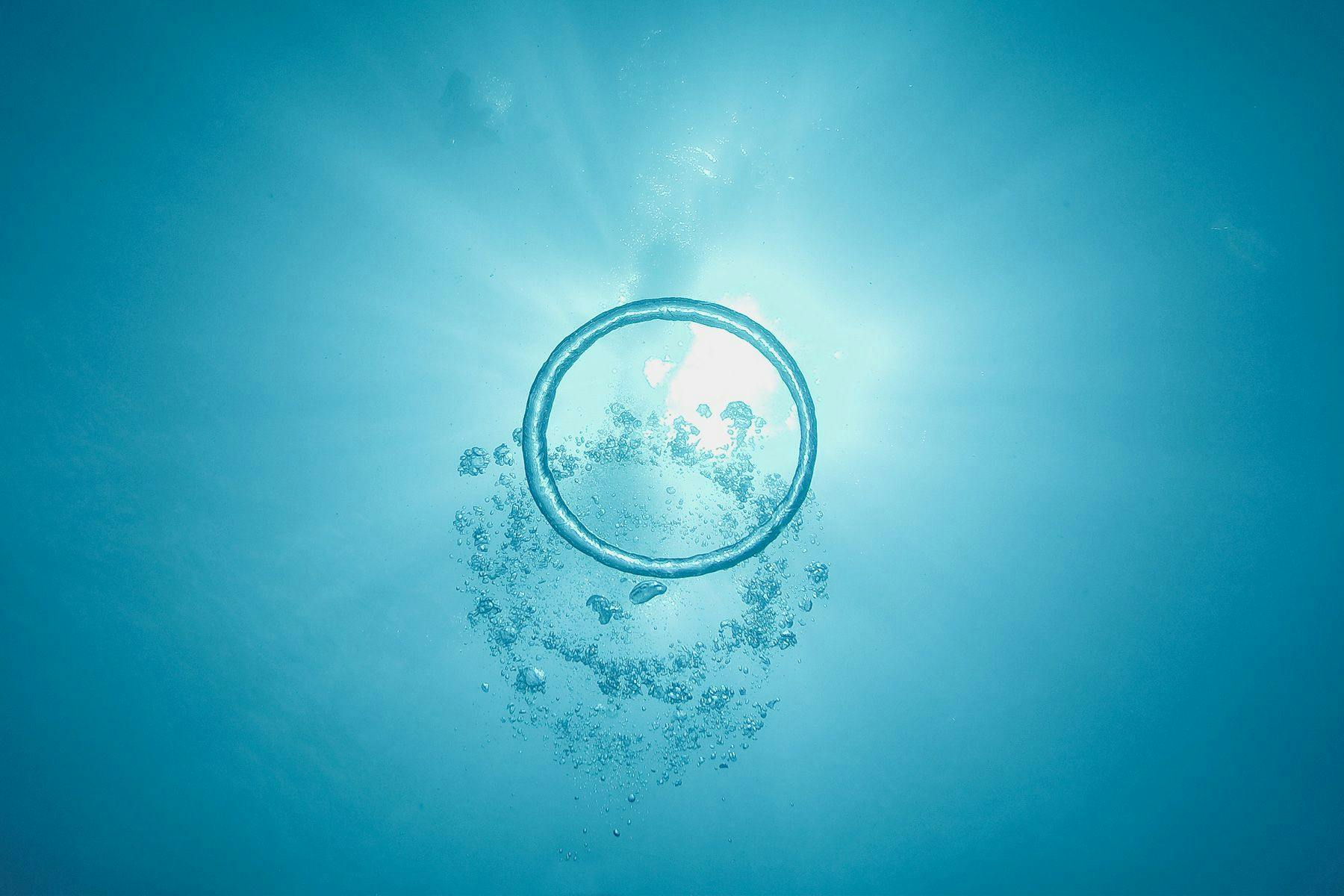
Breathing also does more than simply oxygenate our blood for use by our muscles and organs. Studies by the Russian Space Programme in the 1960s into the effects of heart rate variability in cosmonauts (as a way of evaluating stress on the autonomic nervous system) found a direct link between the rate of a subjects breathing, and their heart rate. This research has since been furthered within the fields of medicine and sports science, but the key takeaway is that when you exhale your pulse slows, and vice versa. A 2013 study by scientists in Sweden found that members of a choir performing a highly structured piece ended up with synchronized heart rates as the songs and chants required controlled breathing. Having good control of your breath can therefore impact your heart rate and other physical factors beyond simply how much oxygen you have available.
To learn more about how our bodies perform underwater, and the ways in which it is possible to improve performance, Surf Simply spent some time with Freediving Instructors International Level 3 instructor Bobby Kim. Bobby is the only other Level 3 instructor in the Americas, alongside FII founder Martin Stepanek, and has a wealth of knowledge and experience of freediving and apnoea training that can be utilized by surfers of all levels to both improve their response to wipeouts, and increase their comfort and confidence.

Beyond sustaining life, what effect does breathing have on us on a day-to-day basis?
Most of us don’t think about our breathing, since it’s one of the bodily functions that’s controlled by the autonomic nervous system. There are a lot of theories around about the benefits of proper breathing – so many, in fact, that there are yogic and, to some extent, martial arts disciplines dedicated almost exclusively to breathing techniques. What we know is that proper breathing can, among other things, relieve stress, lower blood pressure and improve your mood. I can’t get into too much detail on this, since breathing is not the primary focus of freedive training, but rather a way for us to prepare for our dive. For freedivers, proper breathing oxygenates the body and lowers the heart rate prior to a dive, which allows us to extend our breath hold time.
What is our “lizard brain” and what role does it play in our response to being underwater?
The Lizard Brain is the part of the brain that is responsible for your survival instinct – otherwise known as the “fight or flight” response. This is not the part of the brain that actually thinks or reasons, but acts automatically. For example, a new freediver might know that his first urge to breathe is not caused by a low level of oxygen, but might still panic and bolt for the surface, even though he is burning more oxygen than necessary by speeding up. Similarly, a surfer might know that it doesn’t make sense to try to fight a down current and swim for the surface, but once in that situation, the survival instinct might take over and everything your conscious mind knows goes out the window.
These are all natural responses to what the lizard brain perceives to be life or death situations. Unfortunately, the response is not always the correct one. However, with training, we can attempt to replace these inborn responses with a more controlled response that will hopefully end in a more positive outcome.
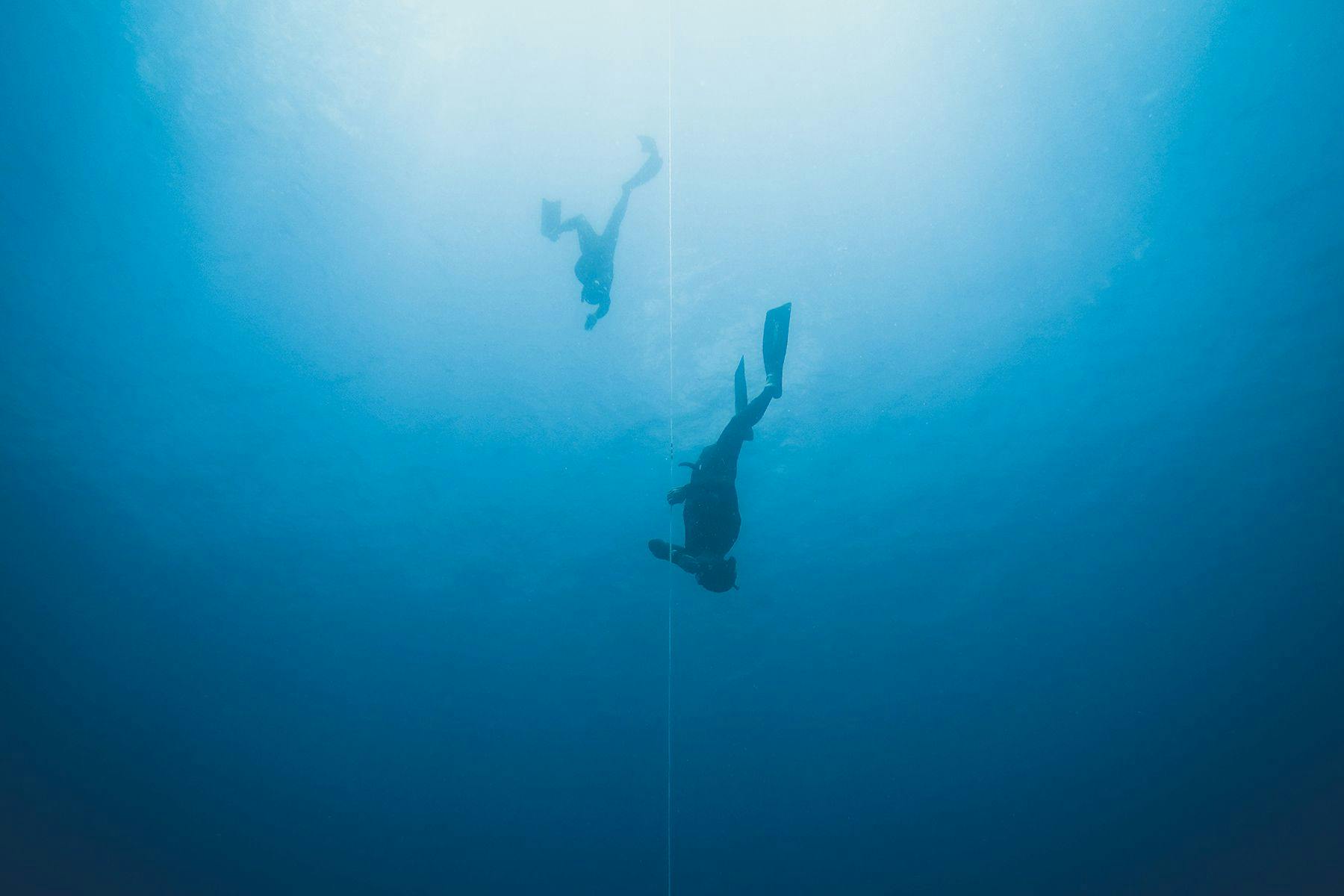
But, haven’t humans evolved from aquatic mammals? Is it possible to tap back into an ability to stay underwater for extended periods?
This is a popular theory that makes a lot of sense. We share certain physiological responses to breath-holding and other adaptations with marine mammals that most other land animals do not. Other than our physical and anatomical characteristics, the one that is talked about the most is called the Mammalian Dive Reflex. There are a few components to it, but all of them, when triggered, allow humans to survive underwater for extended amounts of time and at depths that were once thought to be fatal. For example, submerging your face in cool water will trigger a response known as bradycardia, which is a slowing of the heart rate. The lower your heart rate, the less oxygen you will burn. The less oxygen you burn, the longer you can stay underwater. Other aspects of the Mammalian Dive Reflex protect vital organs and prevent your lungs from getting crushed at depth.
As with any other reflex, the Mammalian Dive Reflex can be trained to become stronger. This is something that we teach in our core courses and is a basis for freedive and breath hold training.
What approach do you take to training people to improve both their lung capacity, and ability to dive deeper, for longer?
In the entry-level course, we get into a discussion about the physiology behind freediving – in other words – what’s going on in your body during a freedive or a breath hold. This includes an understanding of what actually causes your urge to breathe, which, for most of us, is a buildup of carbon dioxide and not a low level of oxygen. Knowing this, and accepting that you’re not going to die if you hold your breath for more than a minute, is half the battle. In addition, we teach students how to breathe prior to a dive or a breath hold, as well as techniques to maximize the volume of air they can get into their lungs.
In the more advanced courses, we teach the students various breathing exercises and other techniques that, over time, can increase inward and outward chest flexibility. By doing this, along with some other advanced diving techniques, we can alter certain lung volume measurements that will have a positive impact on our ability to deal with pressure as a result of increasing depth and the specific challenges that come with it.
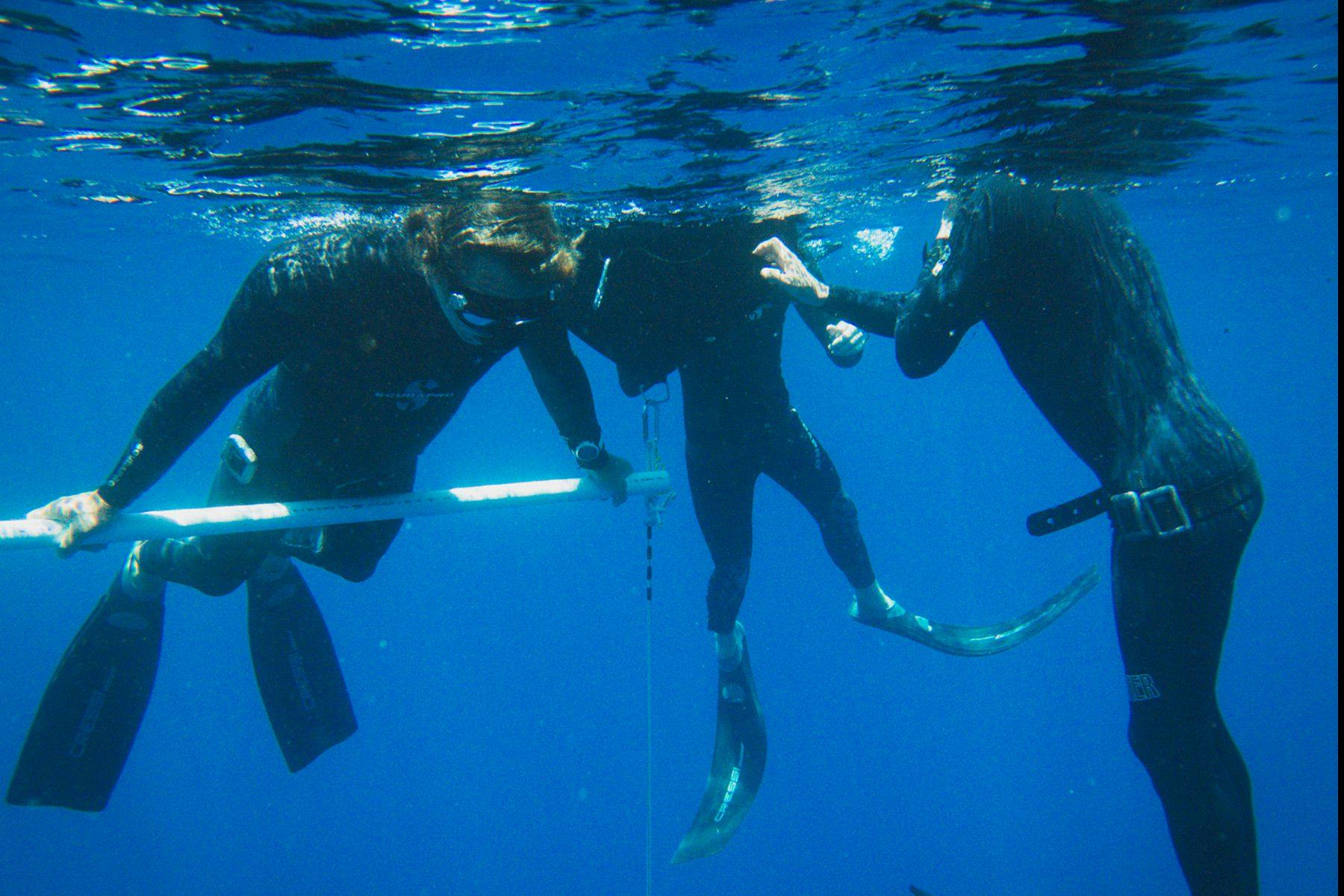
These techniques were primarily developed for freedivers and spearfishermen and women. How do they translate to surfers and the situations that they find themselves in?
Those that aren’t trained in freediving/breath hold (including most surfers) don’t know what the limit of their breath hold ability is. The average person will abort a breath hold attempt within 30-40 seconds. That isn’t because they aren’t physically capable of continuing, but rather because of certain triggers that might make it seem that they are completely out of oxygen, when in fact, they are not.
Beyond that, there are many ways to train to increase your comfort during a breath hold, and to stave off the triggers that would normally signal the end of it. Most of these techniques involve preparation prior to the breath hold that will allow you to maximize your breath hold time, as practiced by all freedivers in different ways. Surfers and other watermen don’t necessarily have the time to prepare for an unexpected breath hold and have to rely on their emergency breath hold, which is a fraction of their maximum hold. However, training to increase your maximum breath hold also carries with it the benefit of extending your emergency hold.
If a surfer understands the physiology behind breath holding, he can train himself to stay relaxed during a hold down situation. The more you panic, the more oxygen you burn and the more carbon dioxide your body creates. As I mentioned earlier, this is the strongest trigger for our urge to breathe. Having said that, whether you’re a surfer or a freediver, a tolerance to high levels of CO2 is essential to survival in extreme situations.
This is the reason that many big wave surfers have recognized the advantages of breath hold training. For example, it’s possible that the primary reason that Greg Long survived his near-death experience at Cortes Bank is because he had trained to have a strong breath hold. Greg is one of the big wave surfers that recommends taking a freedive class, if only to understand what’s going on in your body during a breath hold.
Is it worth developing your ability to control your breath if you’re just a regular surfer, or is it only really required if you surf giant waves and need to prepare for dangerous wipeouts and long hold-downs? Why?
If you ask regular surfers what their biggest fear is, most would probably answer that it’s the potential for being held down for an extended period of time. Of course, the definition of an extended period of time is relative. For a regular surfer, ten seconds might seem like an eternity, and the thought of surfing a double overhead wave might strike so much fear in his heart that he may never build up the courage to try it.
As in many other sports, the fear of negative consequences will likely hold you back. If you can train to take back at least some control over those consequences, you will approach those same waves with more confidence, which will undoubtedly improve your performance. You can look at it this way – the less fear you have, the harder you will probably charge, in any sport. I think most surfers can relate to that.
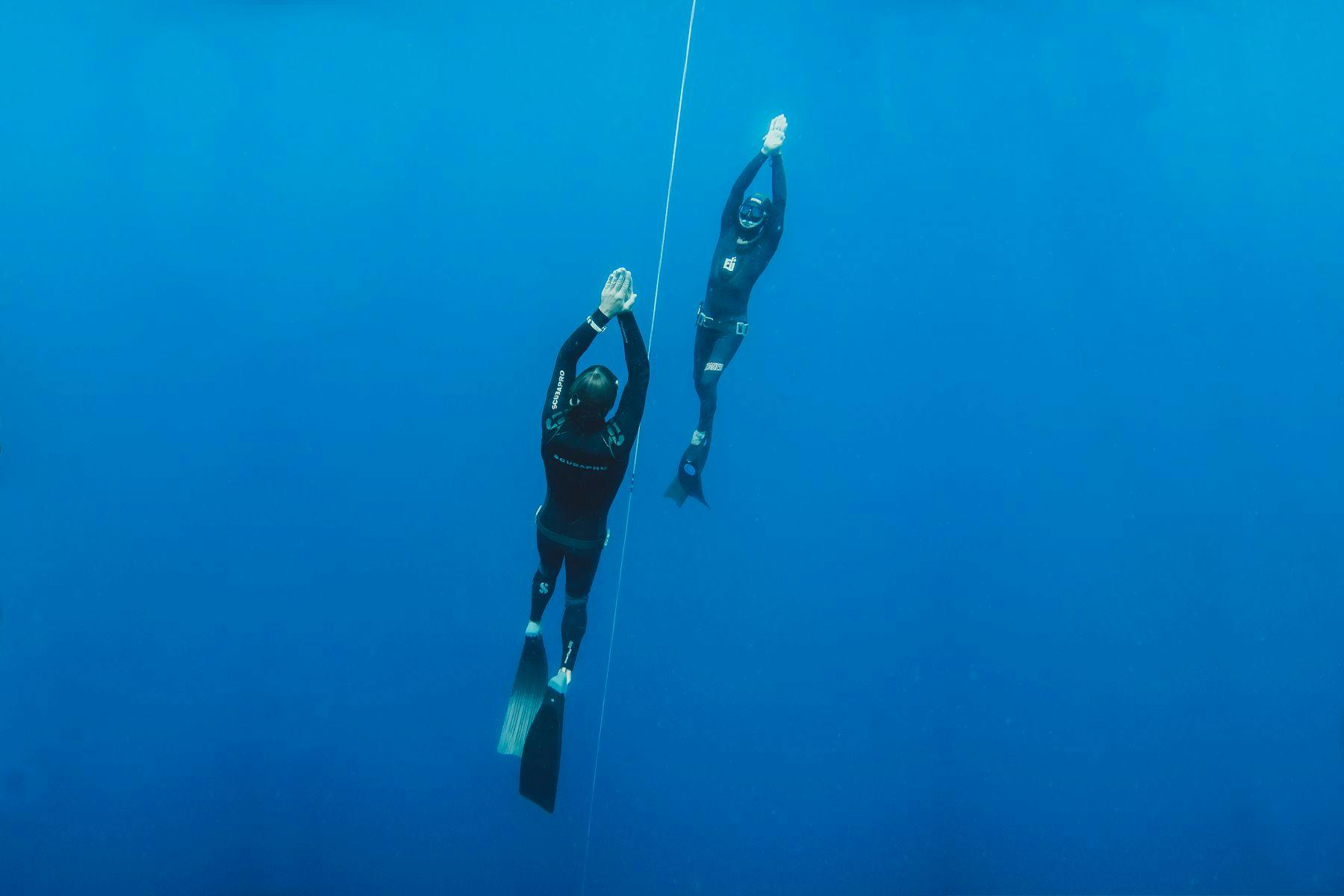
To learn more about the short courses in freediving and waterman survival skills offered by FII, and to find your nearest instructor, hit the link to head over to their website. You can also contact Bobby Kim directly at bobbyckim@gmail.com. Bobby is based in Nosara, Costa Rica but teaches classes all over the world.
All underwater images courtesy and copyright of Leo Parias Photography. Head over to his website or instagram to check out some fantastic nature and underwater photography from here in Costa Rica.